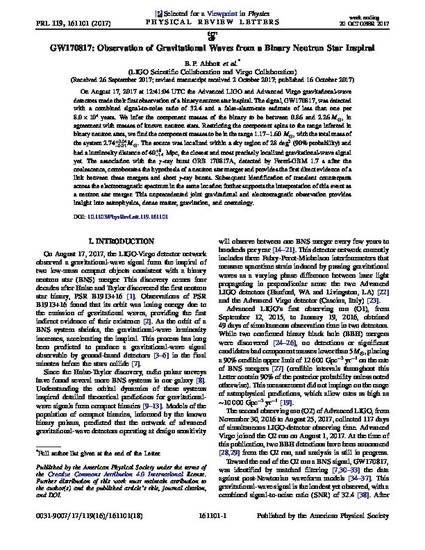
On August 17, 2017 at 12∶41:04 UTC the Advanced LIGO and Advanced Virgo gravitational-wave detectors made their first observation of a binary neutron star inspiral. The signal, GW170817, was detected with a combined signal-to-noise ratio of 32.4 and a false-alarm-rate estimate of less than one per 8.0 × 104 years. We infer the component masses of the binary to be between 0.86 and 2.26 M⊙, in agreement with masses of known neutron stars. Restricting the component spins to the range inferred in binary neutron stars, we find the component masses to be in the range 1.17–1.60 M⊙, with the total mass of the system 2.74þ0.04 −0.01M⊙. The source was localized within a sky region of 28 deg2 (90% probability) and had a luminosity distance of 40þ8 −14 Mpc, the closest and most precisely localized gravitational-wave signal yet. The association with the γ-ray burst GRB 170817A, detected by Fermi-GBM 1.7 s after the coalescence, corroborates the hypothesis of a neutron star merger and provides the first direct evidence of a link between these mergers and short γ-ray bursts. Subsequent identification of transient counterparts across the electromagnetic spectrum in the same location further supports the interpretation of this event as a neutron star merger. This unprecedented joint gravitational and electromagnetic observation provides insight into astrophysics, dense matter, gravitation, and cosmology.
Available at: http://works.bepress.com/michele_zanolin/10/

Published by the American Physical Society under the terms of the Creative Commons Attribution 4.0 International license.